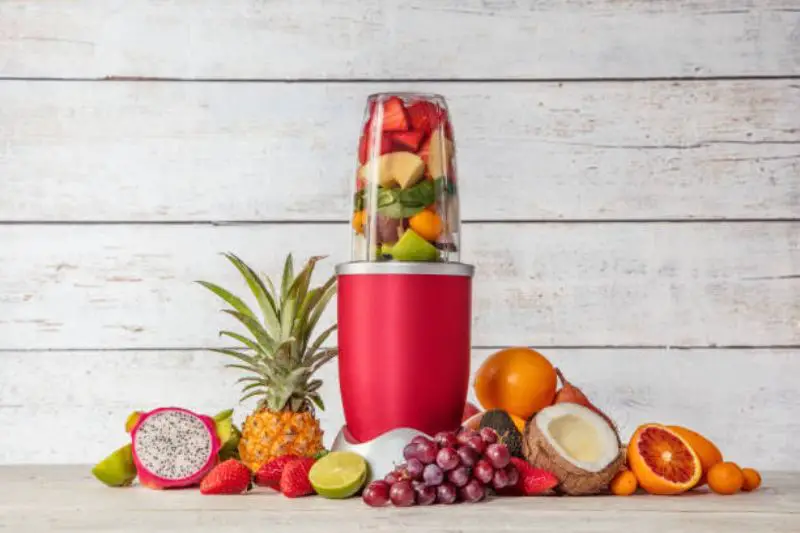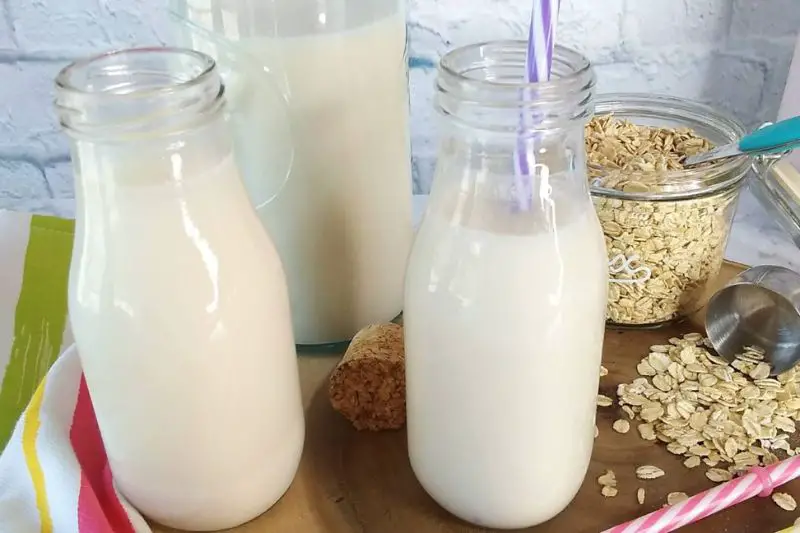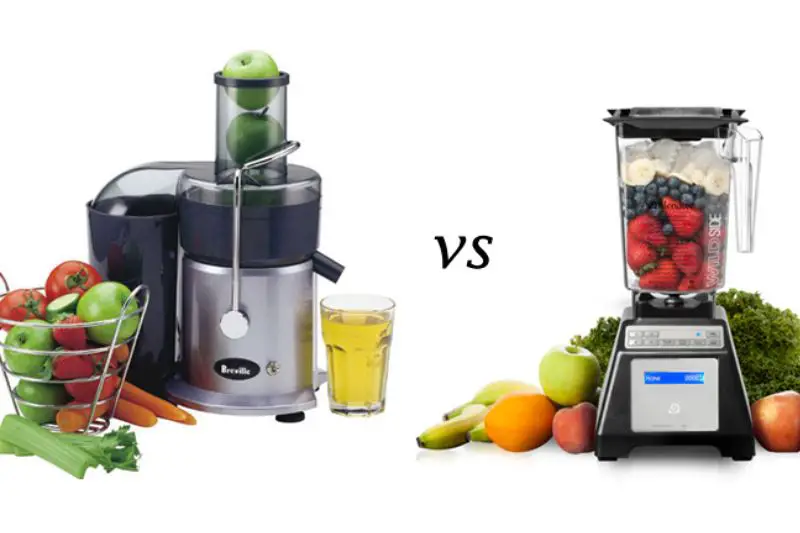Blended Fruit Vs Whole Fruit: When it comes to the debate of blended fruit vs. whole fruit, the answer to which is healthier is not so straightforward.
Both have their advantages and disadvantages. Whole fruit is typically more nutrient-dense than blended fruit because it contains all the natural fiber and vitamins from the fruit.
Additionally, whole fruit is less processed and therefore has fewer added sugars and preservatives.
On the other hand, blended fruit is often easier to consume, especially for those who have difficulty chewing or digesting whole fruit.
Furthermore, blended fruit can be made with multiple types of fruit, allowing for more variety in one’s diet. Ultimately, it is up to the individual to decide which option is best for them.
Both whole fruit and blended fruit can be a part of a healthy diet when consumed in moderation and in combination with other nutritious foods.
In this article, we will explore the differences between blended and whole fruit to understand which one is better for our bodies.
We will look at their nutritional content and the pros and cons of each option to help you decide which one is best for you.
Blended Fruit Vs Whole Fruit: Which Is Healthier:
The comparison between the two requires an analysis of the nutritional content of each form, as well as an examination of the potential health benefits associated with consuming either form.
With regards to nutrition, blended fruit offers a more concentrated dose of vitamins and minerals, due to its processed state and lack of natural fiber content.
What Are Whole Fruits?
Whole fruits are exactly what they sound like, fruits that are in their natural, unprocessed state.
Whole fruits contain the outer peel, seeds, and any other edible parts of the fruit and provide a wide variety of vitamins, minerals, and other nutrients.
They can be eaten raw or cooked, and each type of fruit has its own unique flavor and texture.
What Is A Blended Fruit?
A blended fruit is a combination of two or more fruits that have been pureed together to create a smooth and creamy texture.
Blended fruits are a popular snack or dessert option because they are low in calories and provide essential vitamins and minerals.
Additionally, they can be made with any type of fruit, making them a great way to get creative with your food choices.
The Difference Between Blended Fruit Vs Whole Fruit:
When it comes to deciding between blended fruit and whole fruit, there are several key differences to consider.
Both options can offer an array of health benefits, so it’s important to evaluate your individual needs and preferences in order to determine the best option for you.
1. Nutrient Concentration:
When it comes to nutrient concentration, whole fruit typically contains more vitamins and minerals than blended fruit.
Many nutrients are lost during the blending process, resulting in a decrease in nutrient concentration in blended fruits.
Therefore, when possible, it is best to opt for whole fruits over blended fruits in order to maximize nutrient intake.
2. Fiber In Smoothies Vs Whole Fruit:
From a nutritional standpoint, it can be argued that whole fruits typically contain more fiber than their blended counterparts due to the fact that blending reduces the amount of insoluble fiber present in produce.
3. Antioxidants:
While both are packed with beneficial antioxidants, experts suggest that whole fruit is the way to go as the fibrous material found in the skin and pulp can help slow the release of sugar into the bloodstream and increase satiety.
Additionally, the skins of fruits contain important phytonutrients that are not present in blended fruit drinks.
Therefore, while both options are healthy, opting for whole fruit is typically considered to be the healthier choice.
4. Ease Of Digestion:
The body may be able to digest blended fruit more easily than whole fruit due to the fact that it has already been partially broken down.
Blended fruit is easier for the body to process and absorb all of the necessary vitamins, minerals and other nutrients.
However, whole fruit contains more fiber which can help to regulate digestion, reduce cholesterol levels and prevent certain types of cancer.
5. Sugar Content:
According to nutrition experts, blending fruit to create smoothies or other drinks can cause a dramatic increase in sugar content due to the added ingredients such as honey, syrup, or sugar.
Whole fruit on the other hand, still contains natural sugars but it also contains ample amounts of dietary fiber that helps reduce the absorption of sugar into the bloodstream.
Fiber Naturally Found In Whole Fruit Is Pulverized:
Whole fruits contain a diverse range of fiber, vitamins, and minerals, but when blended into a drink or smoothie, much of the natural fiber is pulverized.
This process reduces the amount of fiber in the product, which has been linked to a variety of health benefits.
Smoothies Often Contain A Lot Of Calories:
Blended fruit is often used in smoothies, and while it may provide some health benefits, it is important to note that whole fruits contain more fiber and fewer calories than their blended counterparts.
To maximize the nutritional benefit of smoothies, it is best to use whole fruits instead of blended fruit whenever possible.
Is It Healthier To Eat Fruit Or Blend It?
Both options have their advantages, there are some considerations to make when determining which form of fruit is best for your health.
Whole fruit is often higher in dietary fiber than blended fruit, making it a more filling option.
Additionally, whole fruit retains the natural vitamins and minerals that can be lost during the blending process.
However, blending can make it easier to consume a larger portion of fruits and vegetables at once, which can be beneficial for those who need an extra boost of essential nutrients.
Ultimately, the choice between whole or blended fruit is a personal one depending on individual needs and preferences.
Why Blend Your Fruit And Vegetables?
Blending your fruit and vegetables is an easy and effective way to increase the nutritional content of your diet.
By blending fruits, such as apples and oranges, or vegetables like spinach and kale, you can create nutritious smoothies that are packed with vitamins, minerals and fiber.
Blending these foods can also make them more palatable for those who may not enjoy the taste of whole fruit or vegetables.
Bottom Line: Blended Fruit Vs Whole Fruit:
Blended Fruit Vs Whole Fruit: When it comes to fruit, whole or blended, it is best to consider the individual needs and preferences of those consuming the food.
While whole fruit is often higher in dietary fiber and retains more vitamins and minerals, blending can make it easier to consume a larger amount of produce at once.
Additionally, drinking a smoothie provides a larger concentration of nutrients than eating whole fruits, meaning that you can get more nutrition from less food.
Ultimately, the choice between whole or blended fruit is a personal one depending on individual needs and preferences.
FAQs
Are Smoothies Good For Me?
A smoothie can be a good way to increase the amount of fruit and vegetables that a person consumes in a single sitting, as well as improve the overall nutritional content of their diet.
Is Blending Fruit Bad For You?
Recent studies suggest that blending fruit may not be as healthy as eating whole fruit. Blending fruit removes the fiber from the fruit and can result in a higher sugar content.
Is Blended Fruit Worse Than Whole Fruit?
No, blended fruit is not necessarily worse than whole fruit.
In fact, blending can make it easier to consume a larger amount of produce at once, and also provides a larger concentration of nutrients than eating whole fruits.





Leave a Reply